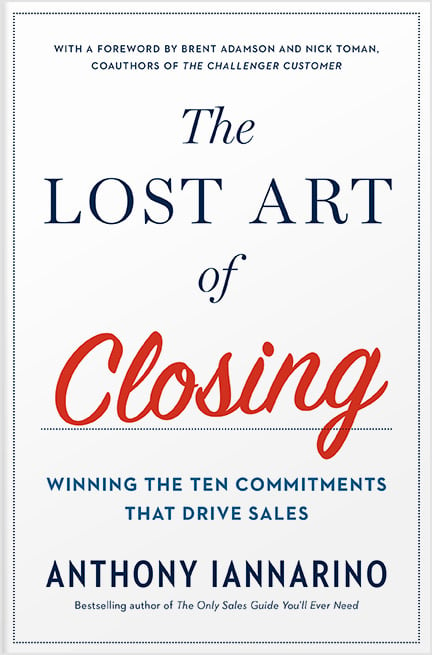The Gist:
- Legacy sales approaches often start with a conversation about “why us,” but that creates no value for your prospective clients early in the sales conversation.
- Focusing on value creation helps motivate your contact to continue the sales conversation.
- Addressing “why us” is a better idea in the context of how you will deliver the results your clients need, after you’ve gotten through the largest part of the conversation.
One difficulty in executing a modern sales approach is getting your conversations in the right order. Three times this week, for example, I have been asked when the right time is to talk about your company and your solutions. The placement of that conversation matters, and getting it right is incredibly important to your results.
For a very long time, marketing departments have advised salespeople to establish their credibility by leveraging the company’s credibility, shielding themselves from having to be the largest part of the value proposition—and from leveraging insights to help the client make the best decision for their company. But in modern B2B sales, the company’s story and bona fides now provides all the protection of a baby’s blanket.
The product people would have the sales force share their product’s features, benefits, and advantages, which they believe will differentiate the product from the competition’s offerings and win the deal. It’s important to love and believe in your product, but you must stop short of believing that it is going to “sell itself” or even that you’re mainly selling a product. Your client is buying an outcome, not a product, service, or solution.
While product differentiation may be helpful in winning a deal, the greater differentiation is found in the sales conversation. This is why you should not lead with any version of “why us?” Instead, move these conversations to later in the process, when the context makes sense.


Deja Vu All Over Again
There is a pattern that has been burned into sales organizations and their salespeople: start with information about the company, follow that with information about the company’s successes (as documented by a slide full of easily-recognized logos), and wrap up with a presentation of the company’s solutions.
I watched one hapless salesperson use a 96-slide deck to march through this pattern, making it through in a mere one hour and twenty-five minutes. When he finished, he asked the client if they had any questions, and they thanked him and told him he was out of time (the deal was worth five million dollars). It was his first meeting, and he believed that his primary role was to answer “why us.” But justifying your company’s value as a partner is much easier—and far more effective—though things like asking good questions, listening to your contacts, and trying to help them understand how to produce better results.
The main problem is that the legacy approach, even in less than 96 slides, no longer serves the client on their buyer’s journey. Instead, it subjects your contacts to torture-by-PowerPoint, prompting them to close their eyes and go to their happy place. There is little value in having this conversation so early, not just because the content is unhelpful but because it creates a misalignment between the salesperson and their prospective client contacts.
Dale Carnegie, the author of How to Win Friends and Influence People, said, “You can make more friends in two months by becoming interested in other people than you can in two years by trying to get other people interested in you.” What makes you a bad first date is talking about what makes you great, in hopes of wooing the poor person who hoped that you’d find them interesting.


When Should You Talk About Why Us?
You should postpone the conversation about “why us” for as long as possible. The longer you can keep your focus on your client, their challenges, their decisions, and the better results they need, the more certain it is that you are scoring points—points that you would not earn by talking about yourself, your company, and your solutions. Those points reflect how much your conversations benefit your client. One of the ways you build a preference to work with and buy from you is by creating more value than any of your self-oriented rivals who stick to a legacy approach. As a salesperson, I will do everything I can to avoid talking about my company for as long as possible, sometimes never saying anything about my company at all. But, when it’s time to address “why us,” you need to understand when and how to do so.
It’s okay to pitch your clients, as long as you are at a point in the sales conversation where it makes sense to do so. Generally, that means you are through the discovery phase of the sales conversation, including the solution design conversation, the consensus conversation, and the investment conversation (see The Lost Art of Closing to understand the value of these commitments and how to gain them). Your conversation about your product, service, and solution can now be had in the context of your client’s problem and how what you offer will deliver the better results they need.
No more pushy sales tactics. The Lost Art of Closing shows you how to proactively lead your customer and close your sales.
You always hope that your sales conversation created so much value and differentiated you so clearly from your competition that the decision to buy from you is a foregone conclusion. But if it is necessary to answer “why us,” the best way to speak about your company is to attach it directly to the outcome your client needs. Explain how your company has the resources to deliver that outcome, how they have the experience necessary to ensure the results, and how their processes and procedures will help provide the client with certainty. Again, it’s the context of the conversation that matters. You should do everything in your power to earn the right to continue the conversation, without having to lean on your company or your solution.
Do Good Work
- What self-focused slides can you move to the back of your deck?
- What tools would you need to start your presentation with “why change” instead of “why us?”
- How can you tie your company and your solutions to your delivery of the solution and the better results, later in the conversation?

Essential Reading!
Get my 2nd book: The Lost Art of Closing
"In The Lost Art of Closing, Anthony proves that the final commitment can actually be one of the easiest parts of the sales process—if you’ve set it up properly with other commitments that have to happen long before the close. The key is to lead customers through a series of necessary steps designed to prevent a purchase stall."
Buy Now










